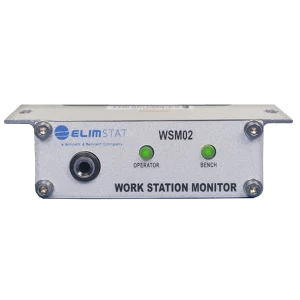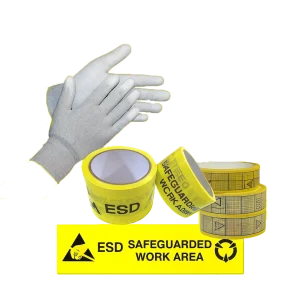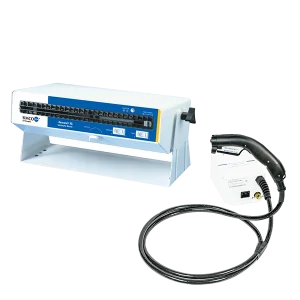-

Snaps for Mats
Select options This product has multiple variants. The options may be chosen on the product page -
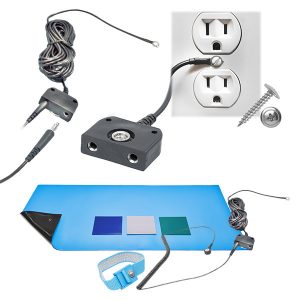
Common Point Grounds
Add to cart -
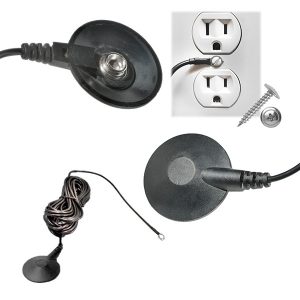
ESD Mat Grounds
Add to cart -
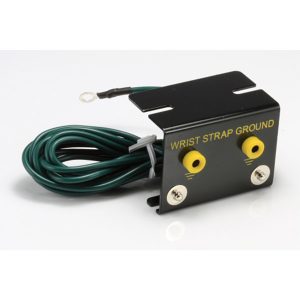
Wrist Strap Grounds
Add to cart
What Is an ESD Ground Point?
An ESD Ground Point is the single location on a workbench or workstation where all static control devices—like wrist straps, mats, and monitoring equipment—connect to a verified electrical ground.
This ensures every grounded component shares the same electrical potential, preventing voltage differentials that can cause electrostatic discharge (ESD) damage to sensitive electronics.
A proper point ground includes:
– A common-point ground cord with a 1 megohm resistor for controlled discharge rate
– #10 ring terminal or banana jack connection for outlet grounding
Using a dedicated ESD Ground Point is the most efficient way to bond all ESD protection elements into one unified system.
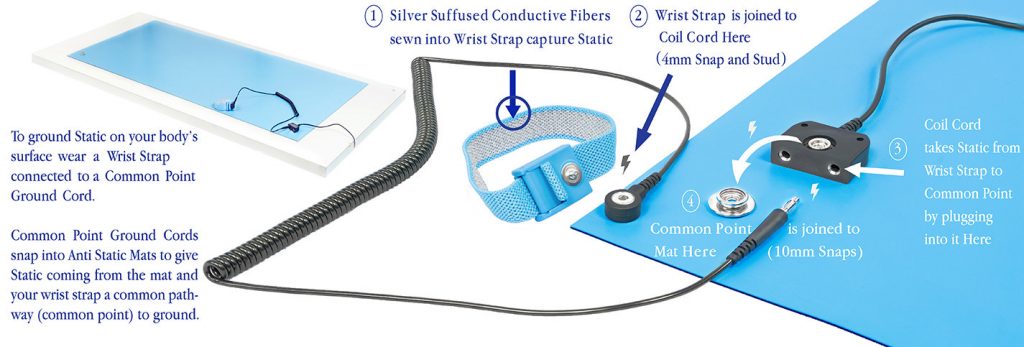
Why a Common Point Ground Matters
Without a single ESD point ground, each grounded device could discharge at a slightly different rate, creating potentially damaging voltage differences. The ANSI/ESD S6.1 standard requires that all elements of an ESD control system be connected to the same electrical ground reference point.
Our Common Point Ground Cables are designed for consistent performance and compliance:
– Built-in 1 MΩ resistor for safe, controlled discharge
– Nickel-plated banana jacks for long-term durability
– Molded strain relief to prevent cord damage during use
This setup ensures full compliance with ANSI/ESD S20.20 and IEC 61340 recommendations for static-safe environments.
Internal Construction of an ESD Ground Point Cable
A well-engineered ESD grounding cable ensures both safety and reliability. Inside, the components work together to regulate the discharge path between your workstation and the electrical ground.
Construction layers include:
– Conductive copper wire: Creates the electrical path to ground.
– 1 megohm resistor: Regulates discharge rate for personnel and equipment safety.
– Polyurethane/PVC jacket: Provides insulation and mechanical protection.
– #10 ring terminal: Connects directly to grounded outlet.
– Banana socket: Accepts wrist strap or mat leads.





